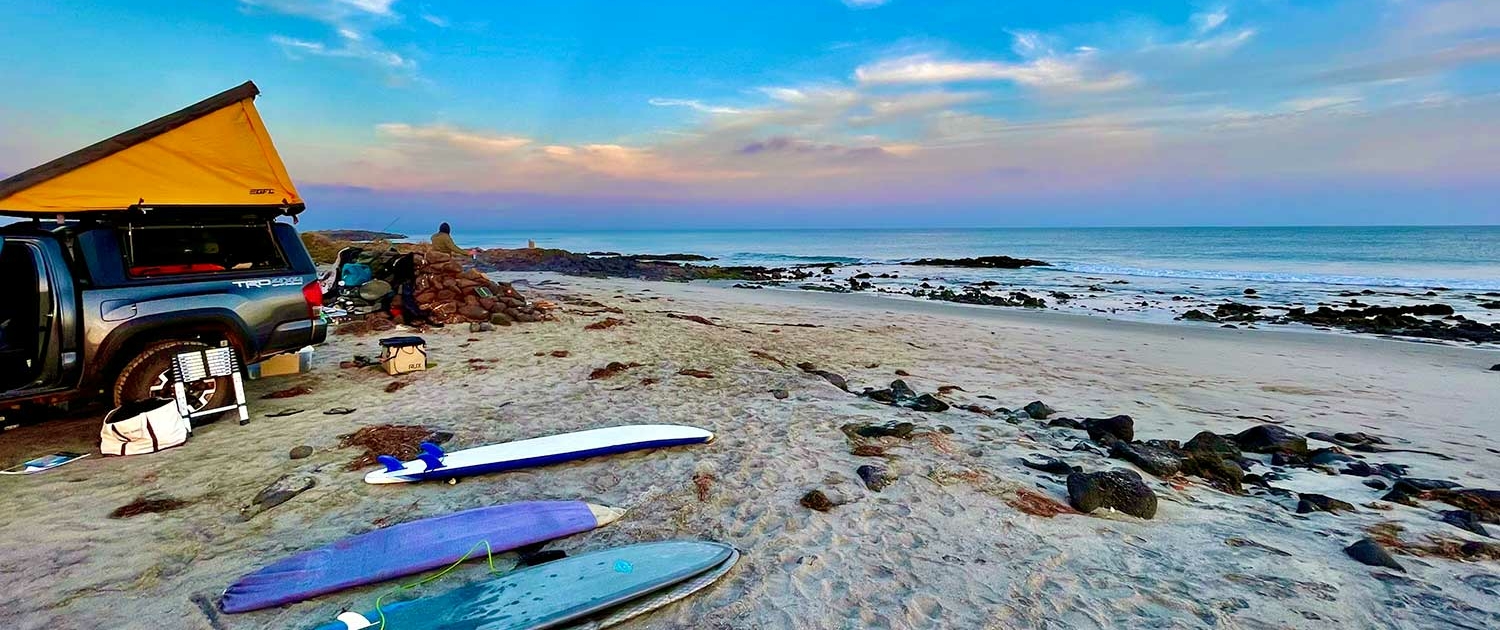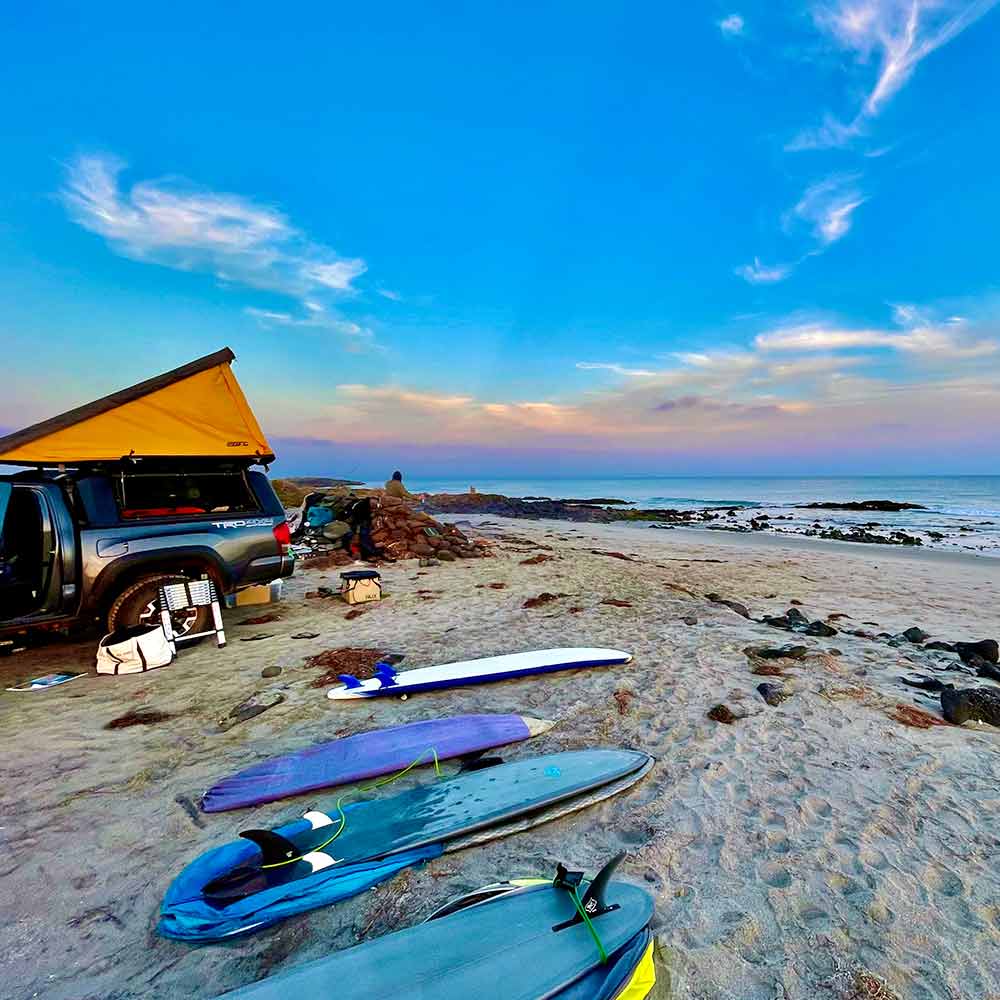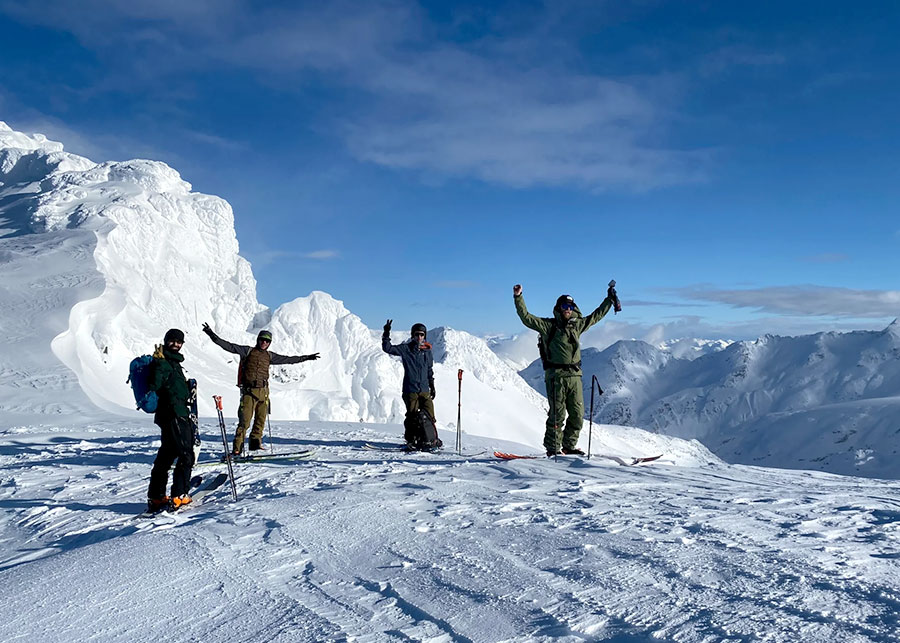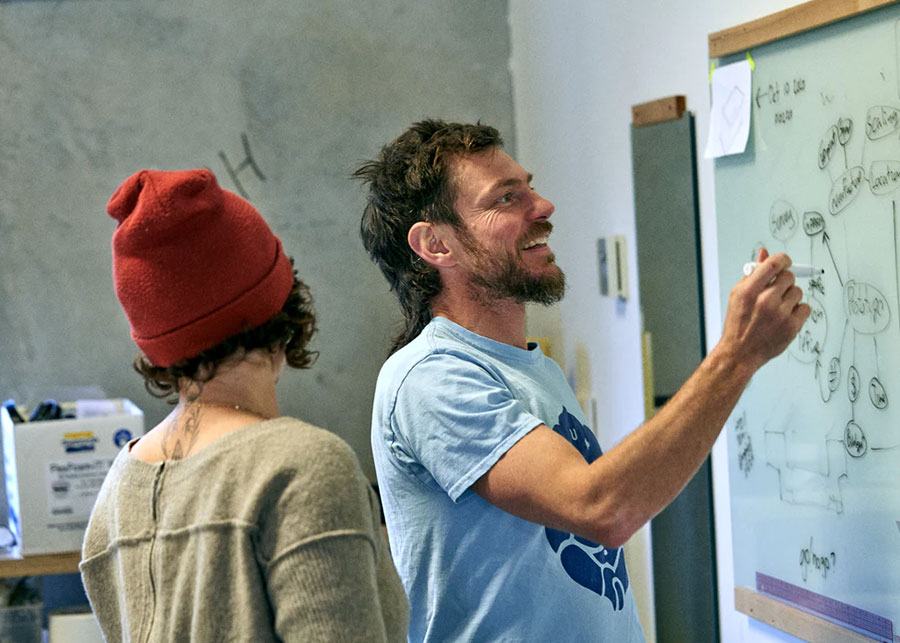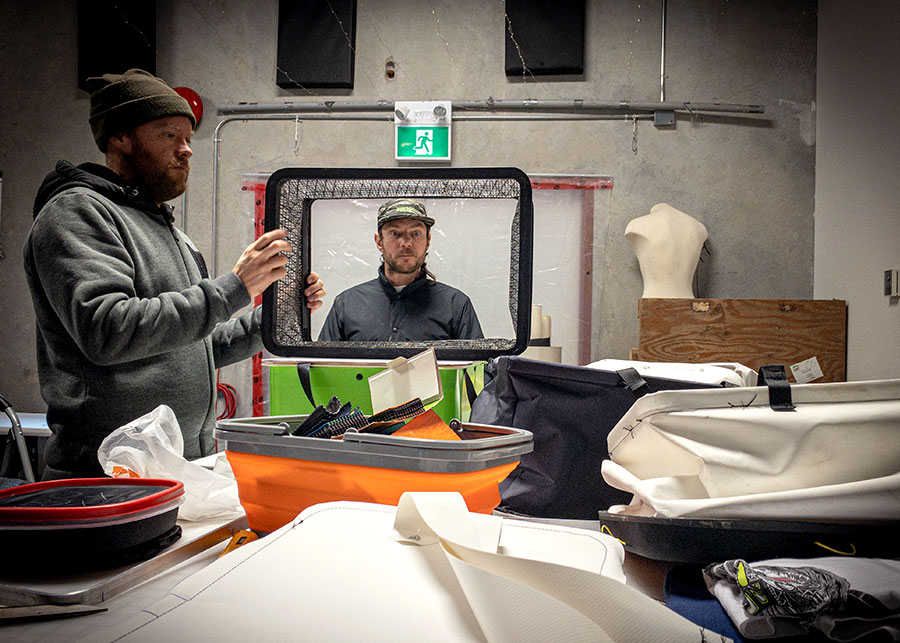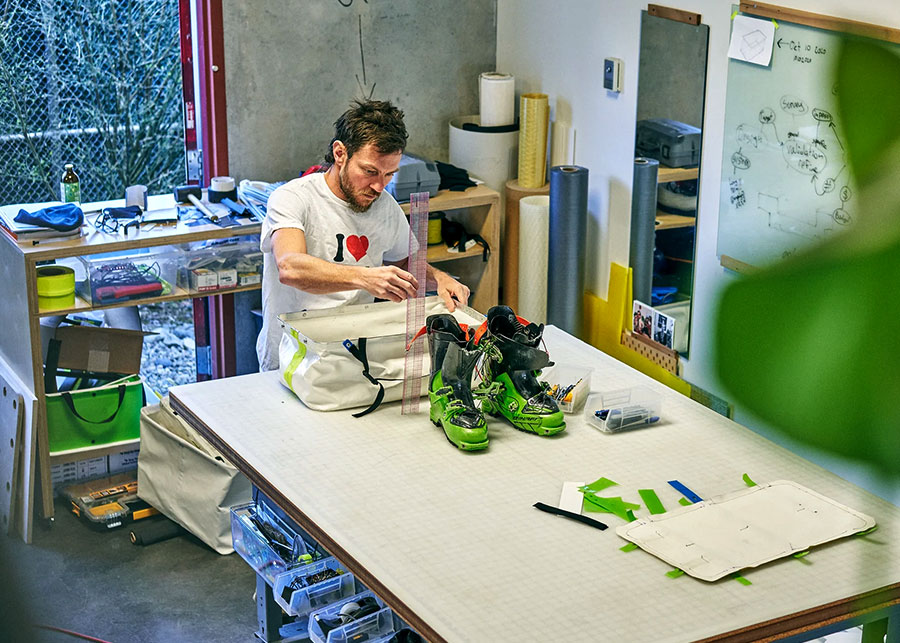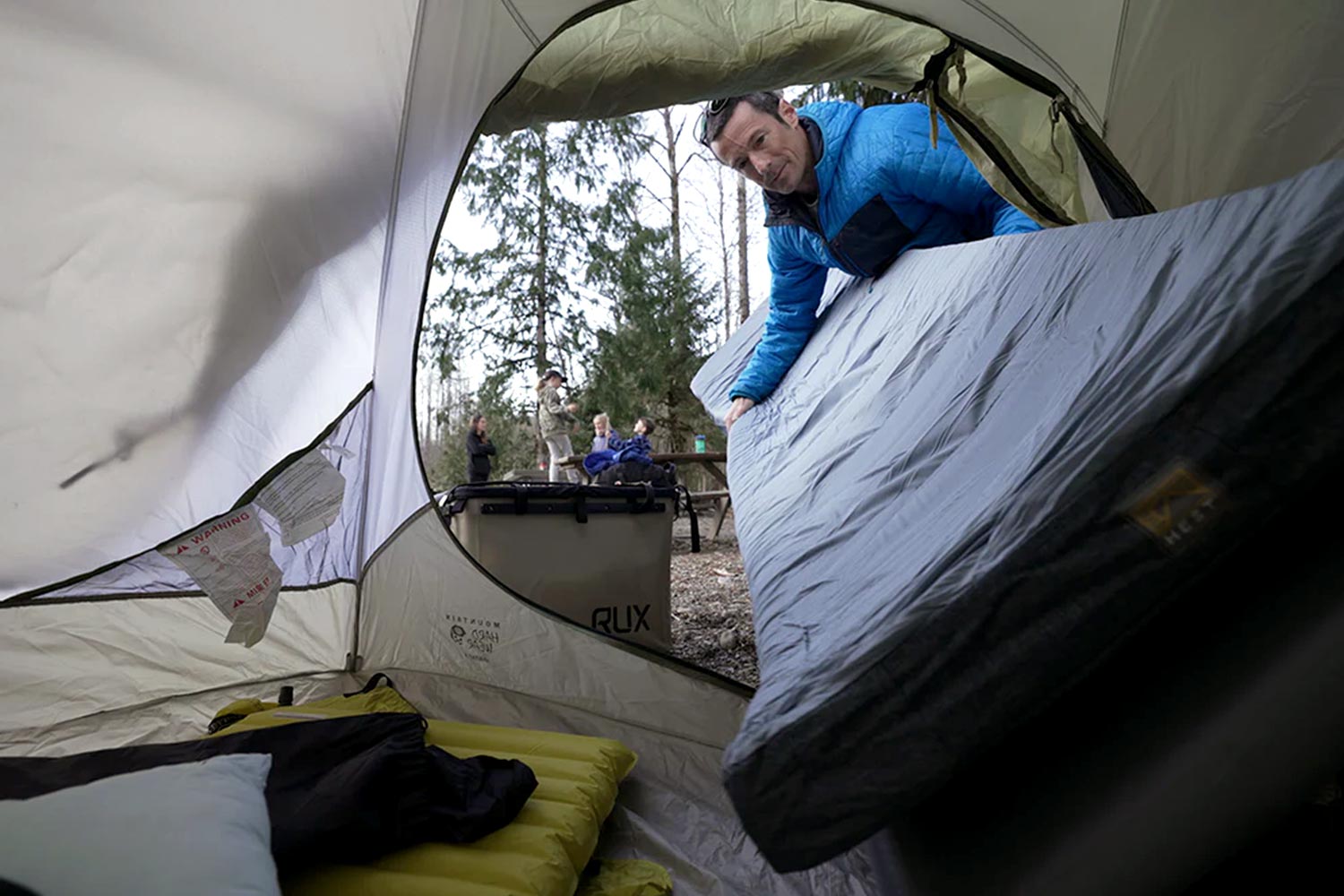The best mountaineers look both inward and outward.
While they build each RUX for long-term use, they can’t stop tinkering with each new release, which has taught them a lot about large-scale invention and themselves.
“To be honest, tinkering is mostly a solitary activity. And ideas are cheap—everybody has them, especially when it comes to their gear,” says Tony. “It’s relatively easy to create one of something. But the real work in being an outdoor gear company is the ongoing testing, sourcing of materials, communicating with manufacturing partners, taking customer feedback, and bringing a quality product to market.”
“The RUX looks relatively simple, but you could hardly have picked a more complex way to enter the outdoor market from a manufacturing perspective. Timelines require that you plan really far out to make a great product—you can never make last-minute decisions,” adds Andre.
It’s a methodical, exacting process. But it’s one they relish. As makers and flow state seekers, they know the drill. Tend to details, lay the groundwork, get dialed in. And by doing so, make more of life’s best moments possible—the view from the top pitch, the post powder-turn whoop, the clink of glasses with old friends.
“If you’re always ready to roll,” says Andre, “you can get right to the experience.”

